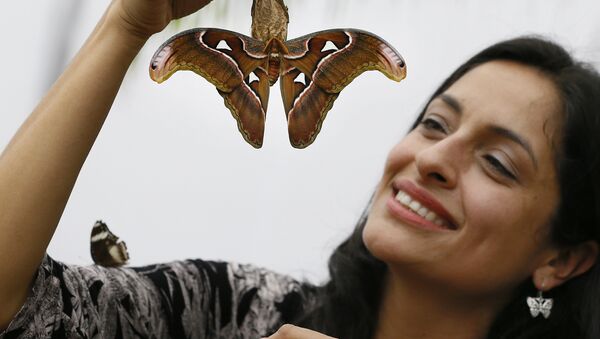The study comes from a team of Australian evolutionary biologists led by professor Mark Elgar from the University of Melbourne's School of Biosciences. They wanted to test a hypothesis put forth by none other than Charles Darwin, who proposed that males of a species who were good at detecting the desires of females were more likely to reproduce back in 1871.
Elgar mentioned the well-known fact that females seek certain traits in mates, causing males to evolve to better display these traits (the vivid plumage of male peacocks being Darwin's favorite example). "But Darwin also proposed that sexual selection can favor males who are better at detecting and responding to signals from females, including chemical signals like pheromones," Elgar said. "So males with sensory structures that can better detect female signals may have the edge in finding them in order to mate and pass on their genes."
To test this, Elgar and his team studied Uraba lugens, the gum-leaf skeletoniser moth. A common pest in Oceania, U. lugens are the bane of eucalyptus trees, as they eat their leaves during their larval stage. After they gorge themselves on gum tree, they enter their pupal stage. Then they emerge as a moth – and die a week later.
"Within this week, the moths must attract a mate, sometimes competing with many other moths in the same area," said Ph.D. student Tamara Johnson, who contributed to the research. In other words, U. lugens spends its dying moments desperately trying to get lai
To accomplish this, female moths release sex-pheromones into the air. Males detect the pheromones and flap over as fast as they can to make the bug with two backs.
Elgar noticed that the males had very different antennae from the females: large, feathery and comblike, unlike the females' thin and simple appendages. Going by Darwin's hypothesis, the better the male';s antennae, the more likely he'd be to detect a female's pheromones before he drops dead.
The study, which involved placing female U. lugens in traps and seeing how many males they could snare, supported that hypothesis. The well-endowed males came knocking more often than the ones with smaller antennae.
"Our data are consistent with Darwin's 1871 prediction that sexual selection favours exaggerated sensory receptor structures like antennae," says Dr. Matthew Symonds, who also participated in the study. "As evolutionary biologists, it's very rewarding to be able to support a long-standing idea, originally floated by Darwin, that hasn't attracted much attention."
The team also suggested that the females understood and reacted to this trend: Elgar explained that they noticed the females releasing smaller amounts of pheromone than expected. To release a large amount would be to present herself as the drunken sorority girl of the moth world, one who would shack up with any male who gets the signal regardless of how impressive his antennae were. By releasing smaller amounts, the females were less likely to attract mates overall but more likely to attract high-quality mates.
"These males may be better mates because producing and maintaining a large sensory structure is costly and possible for higher quality males only. Those male qualities may be passed onto her offspring," said Elgar.
"This study turns that on its head in saying that it's not the loudest male who wins the female, it's actually the quietest one who listens carefully who gets the mate," he added. "I'm sure many human females may think that's right too."







